Target 14.1 Reduce and prevent pollution
By 2025, prevent and significantly reduce marine pollution of all kinds, in particular from land-based activities, including marine debris and nutrient pollution
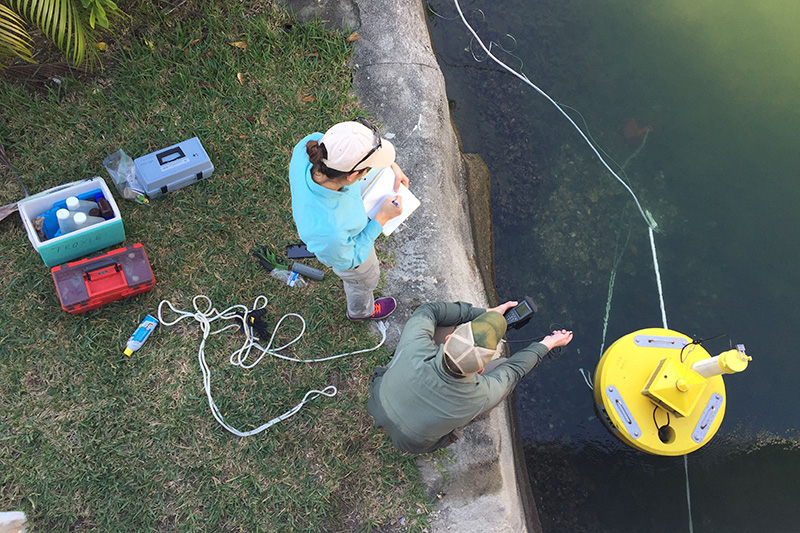
CREST Center for Aquatic Chemistry and Environment
FIU’s Institute of Environment features the CREST Center for Aquatic Chemistry and Environment, where faculty and students focus on detecting and researching the impacts of toxic substances including microplastics, pesticides, industrial chemicals, oil, pharmaceuticals, nutrients and metals in the water. The NSF-supported center of research excellence includes researchers from FIU architecture, biology, chemistry, computer science, earth systems, public health and engineering. These researchers were among the first to respond to a massive fish kill that struck Biscayne Bay, collecting and analyzing water samples to help determine the cause of the devastation. They continue to work in the bay. They are also developing and deploying autonomous vessels that can explore difficult-to-reach urban environments to pinpoint contamination sources.
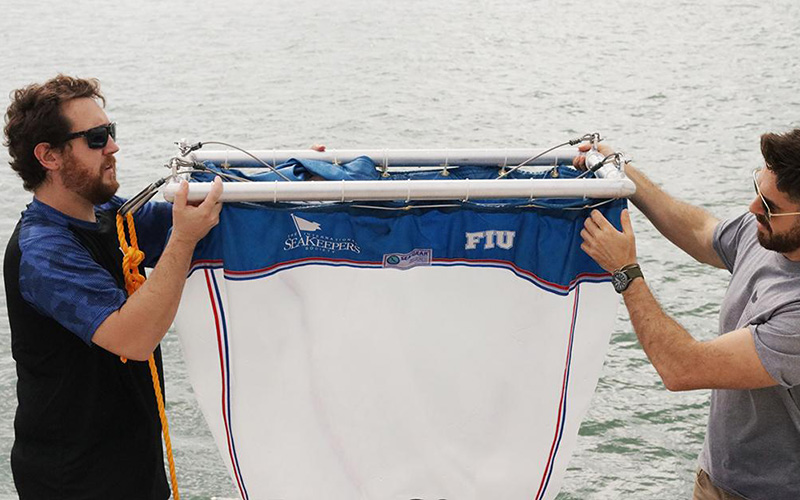
S.A.R.A.H. Initiative
An estimated 8 to 12 million tons of plastics enter the oceans every year. FIU and the International SeaKeepers Society have joined forces on a collaborative project dubbed the S.A.R.A.H. Initiative where privately owned yachts become platforms for FIU scientists to conduct field research. Special nets are towed behind the vessels to gather samples of plastic debris in the water, including tiny microplastics. More than a name, S.A.R.A.H. is an acronym for the process to end this epidemic — sample, aggregate, return, analyze, help. After samples are collected in the nets, they are packaged and shipped back to FIU researchers for examination. In the lab, samples are tested to pinpoint the type of plastics that are plaguing our oceans and the findings are added to an online database. The data can be the foundation for future policy decisions that can ensure the ocean is home to more marine life and less plastic.
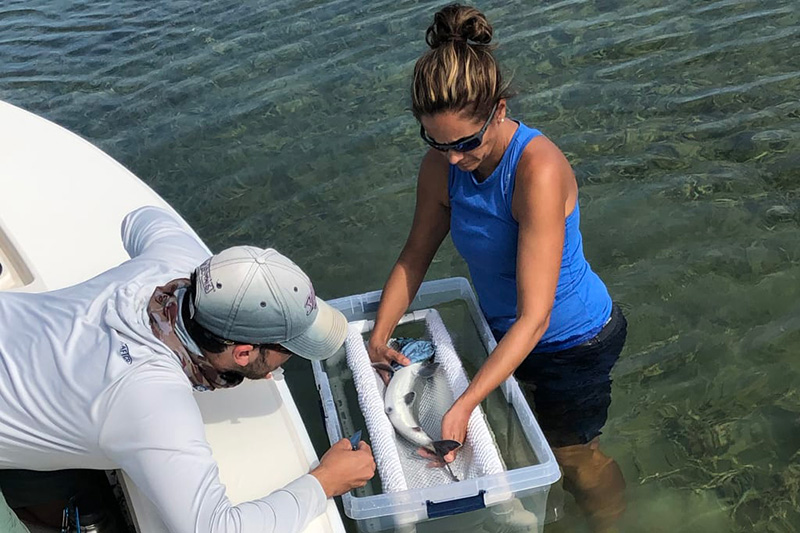
Pharmaceutical Contamination
FIU's environmental scientists led the first study of its kind that discovered pharmaceutical contaminants in the blood and other tissues of bonefish in Biscayne Bay and the Florida Keys. These contaminants pose a significant threat to the flats fishery, an economically important part of Florida’s recreational saltwater fishery, which supports over 88,500 jobs. Researchers also found pharmaceuticals in bonefish prey — crabs, shrimp and fish — suggesting that many of Florida’s valuable fisheries are exposed, and not only the bonefish fishery. With approximately 5 billion prescriptions filled each year in the U.S., this wastewater contamination is an invisible threat that affects fish behavior, reproduction and survival. As the researchers advocate to expand and modernize wastewater treatment and sewage infrastructure, they are expanding their research to other marine animals and locations.

PFAS – Forever Chemicals
FIU chemists are investigating distribution of perfluoroalkyl and polyfluoroalkyl (PFAS) in major watersheds and canal systems to advance strategies for controlling and reducing these forever chemicals in water systems. They are also examining concentrations of PFAS in oysters to determine the extent of contamination in wildlife and the food chain. Our scientists are among the first to measure the local distribution and level of PFAS.
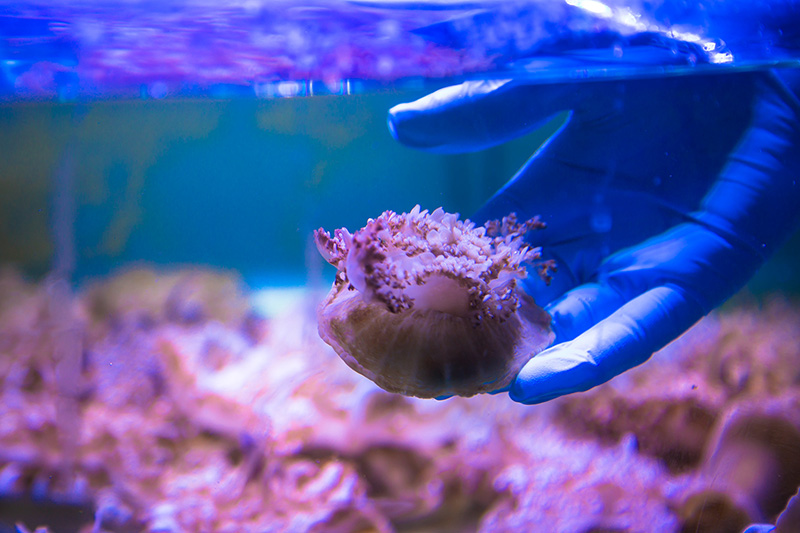
Oil Spills
Leveraging our long-term records on water quality, FIU is uniquely positioned to assess the real-time impacts of oil spills in the Gulf of Mexico. Our experts in marine chemistry and water quality, ecotoxicology, marine ecology, economics and energy policy work together to improve global understanding of oil spills. Collaboratively with local governments, we help communities mitigate damages caused by spills. We use sonar and ROVs to provide baseline information on coral reef fish diversity and ecology, helping officials better fortify the gulf for U.S., Mexican and Cuban fishing industries. FIU marine scientists are studying impacts to genetic diversity, population connectivity and communication among deep sea organisms to provide a timeline of their recovery following the Deepwater Horizon oil spill and genetic sequencing protocols for future research. Our chemists are the first to provide data on how oil-degrading bacteria respond when an oil spill strikes. They are studying the impacts of chemicals used to treat oil spills to ensure the solution for one problem doesn’t create another problem, as FIU researchers discovered was the case for jellyfish with a dispersant used in 2010. These efforts and more are giving scientists, first responders and policymakers the information and tools they need to be better prepared.
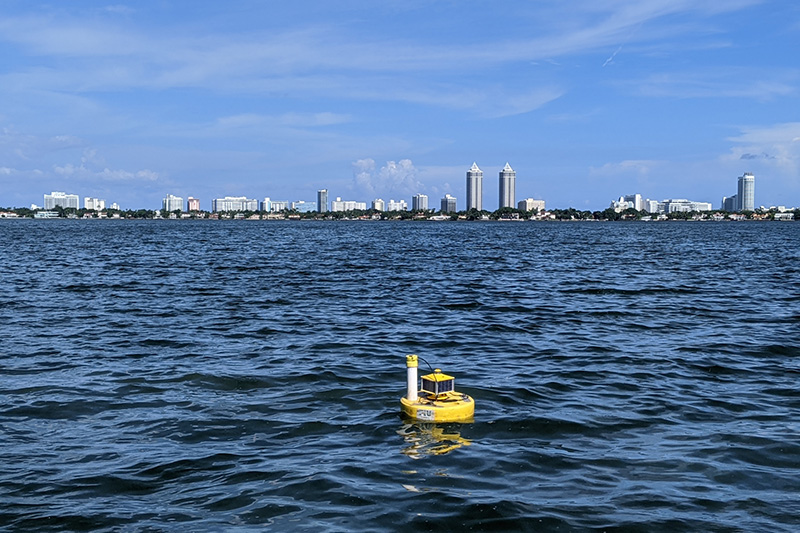
Biscayne Bay
High water temperatures coupled with significant excess nutrient pollution recently sent Biscayne Bay into respiratory distress. For decades, FIU has led research on the bay's health, and our research teams responded immediately, deploying special autonomous surface vessels and buoys to measure temperature, dissolved oxygen, and chlorophyll to better understand what was happening and what was needed to stop it. They worked with local officials to help re-oxygenate the bay. Their work continues as the bay is continuing to show signs of an ecosystem in trouble. More than just science, our work is focused on communicating with local communities to educate on the role they play in the health of the bay as well as the need for improved protections at the local and state levels. Recently, the university proposed a new initiative for a comprehensive monitoring network for the bay to identify potential problems before they become crises. The researchers have been actively pursuing funding opportunities to advance this effort.